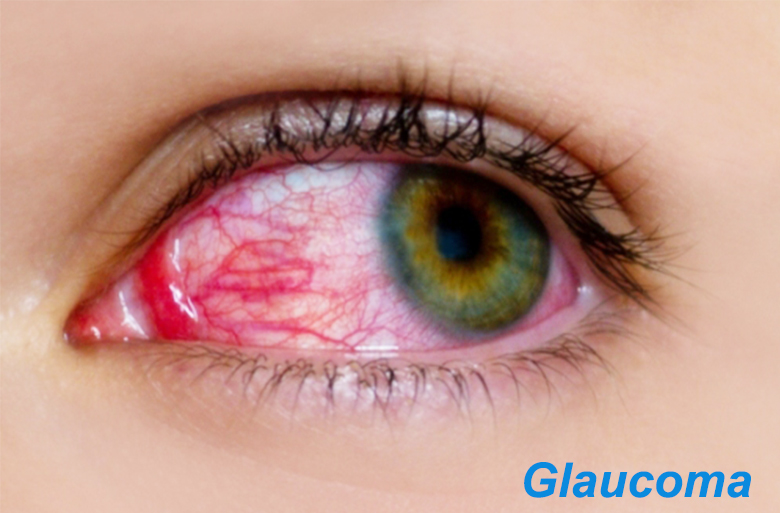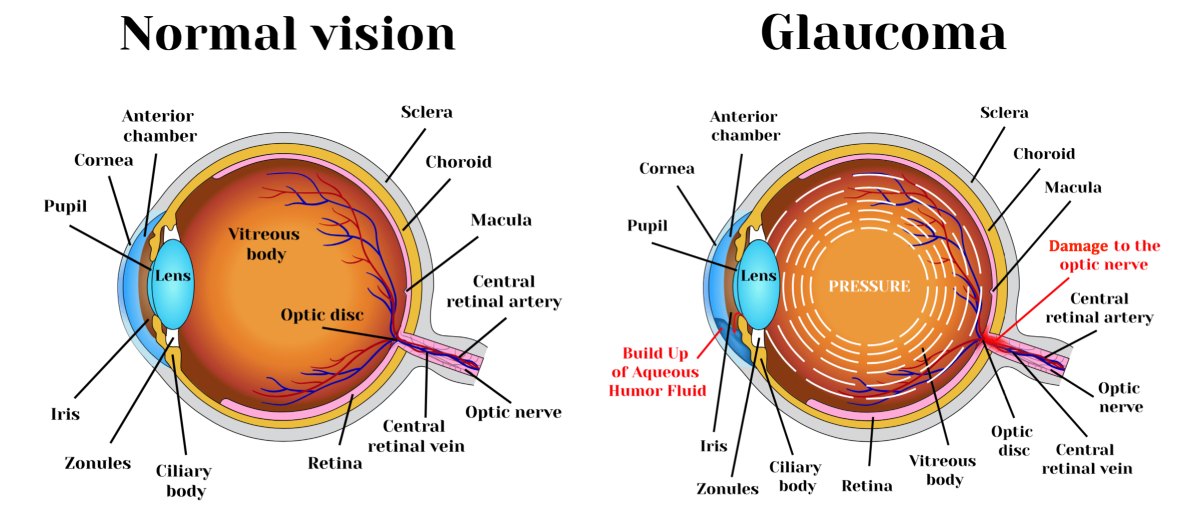Glaucoma Services
Understanding Glaucoma: The "Sneak Thief of Sight"
What is Glaucoma?

Glaucoma is a group of eye diseases characterized by damage to the optic nerve, which sends visual signals to the brain. When the optic nerve gets damaged, the brain does not receive all the signals being sent, leading to blind spots.
It is often called the "Sneak Thief of Sight" because it is painless, symptomless in early stages, and the vision loss is irreversible.
What Causes Glaucoma?

A healthy eye produces a fluid called aqueous humor. High intraocular pressure (IOP) occurs when the drainage system (Trabecular meshwork) is blocked, and the fluid cannot drain out at a normal rate.
This increased pressure pushes against the optic nerve, causing gradual damage. Intraocular pressure is currently the only treatable risk factor for glaucoma.
Types of Glaucoma
- Chronic Open-Angle Glaucoma: Most common type. Damages vision gradually and painlessly. Pressure rises slowly.
- Angle-Closure Glaucoma: A medical emergency. Causes sudden, severe eye pain, headache, nausea, vomiting, haloes around lights, and red eye due to a sudden blockage of the drainage angle.
- Congenital Glaucoma: Present from birth due to a defect in the drainage angle. Children may have cloudy eyes, light sensitivity, and excessive tearing.
- Secondary Glaucoma: Caused by eye injuries, inflammation, advanced cataracts, or long-term steroid use.
- Normal-Tension Glaucoma: Optic nerve damage occurs despite normal eye pressure. Low blood pressure can be a contributing factor.
How is Glaucoma Diagnosed?
A comprehensive eye check-up by an ophthalmologist is the best way to detect Glaucoma. We use advanced diagnostic tools:

- Intra-Ocular Pressure (Tonometry): Measures eye pressure (Normal is 12-21 mmHg). Applanation tonometry is the gold standard.
- Pachymetry: Measures corneal thickness to ensure accurate pressure readings.
- Gonioscopy: Evaluates the drainage angle to determine the type of glaucoma.
- Perimetry (Visual Field Test): Maps your peripheral vision to detect any blind spots or vision loss.
- OCT (Optical Coherence Tomography): Scans the retinal nerve fiber layer to detect thinning/damage before it affects vision.
Who is at Risk?
While anyone can get glaucoma, certain groups are at higher risk:
- People over 45 years of age.
- Family history of Glaucoma.
- Patients with Diabetes or High Blood Pressure.
- High Myopia (Nearsightedness).
- History of eye injury or long-term steroid use.
- People of African or Asian descent.
Treatment Options
Treatment aims to lower eye pressure to prevent further damage. Note: Vision already lost cannot be restored.
- Eye Drops: The most common treatment. They either reduce fluid production or improve drainage. Must be used lifelong.
- Laser Therapy: Laser Trabeculoplasty helps open the drainage mechanism.
- Surgery (Trabeculectomy): Creates a new drainage path for fluid to leave the eye if drops/laser are insufficient.
Common Questions about Glaucoma
Yes. Glaucoma often affects peripheral (side) vision first, so your central vision remains clear until the late stages. This is why regular screenings are vital.
Yes, having a family member with glaucoma increases your risk. Inform your eye doctor about your family history.
If left untreated, yes. However, with early detection and consistent treatment, most patients retain useful vision for their entire lives.
